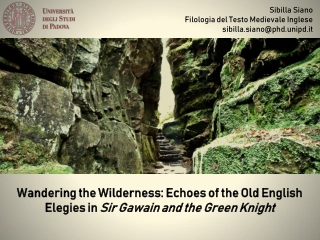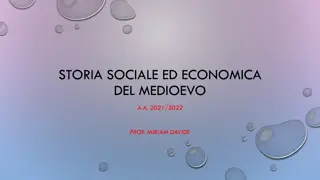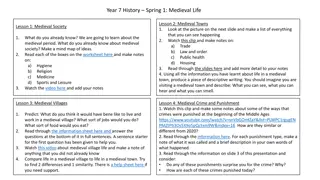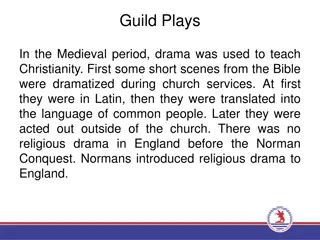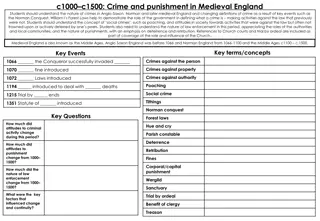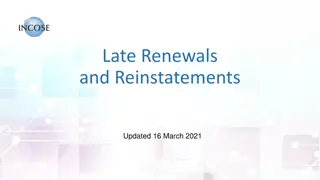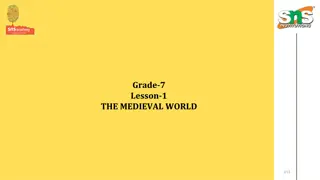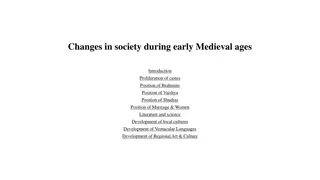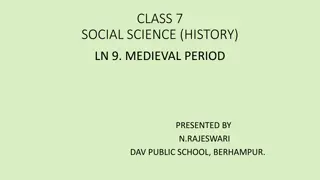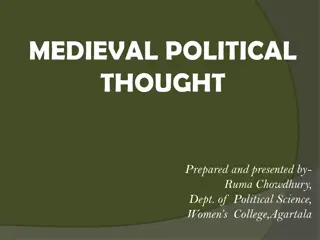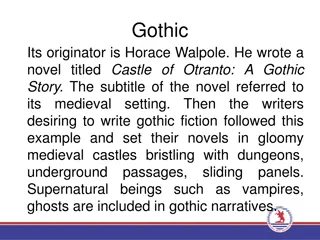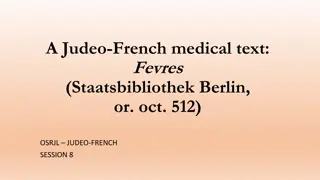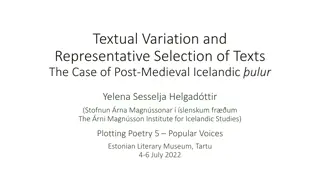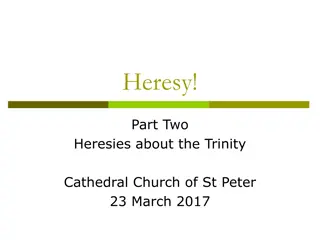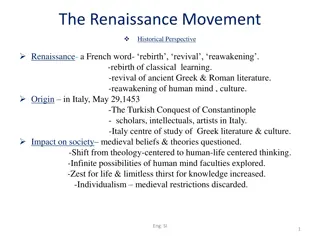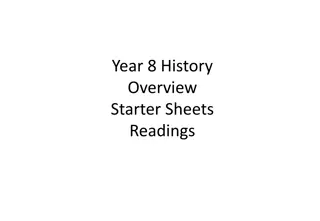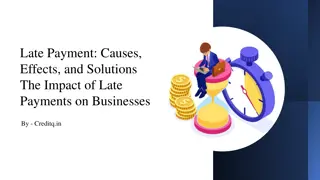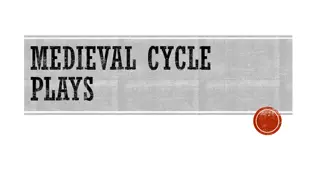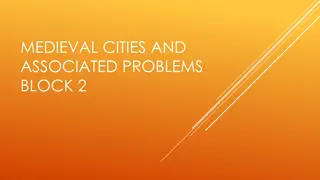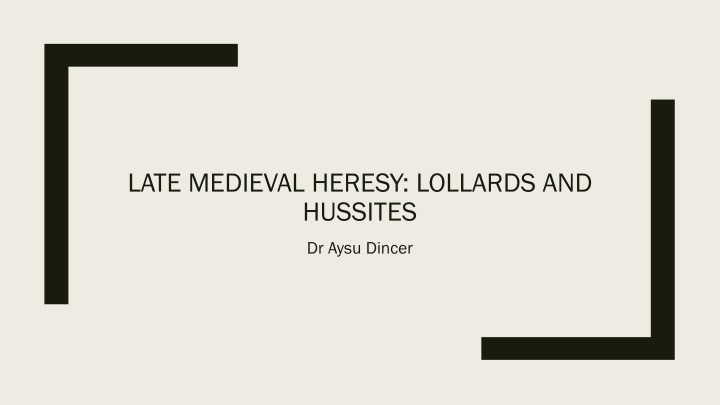
Late Medieval Heresy: Lollards and Hussites Overview
Explore the late medieval heresies of Lollards and Hussites, including the origins, beliefs, key figures like John Wyclif, and the development of these movements post-Wyclif's era. Learn about the challenges, controversies, and impact of these heretical movements on the church and society during the tumultuous 14th and 15th centuries.
Uploaded on | 0 Views
Download Presentation

Please find below an Image/Link to download the presentation.
The content on the website is provided AS IS for your information and personal use only. It may not be sold, licensed, or shared on other websites without obtaining consent from the author. If you encounter any issues during the download, it is possible that the publisher has removed the file from their server.
You are allowed to download the files provided on this website for personal or commercial use, subject to the condition that they are used lawfully. All files are the property of their respective owners.
The content on the website is provided AS IS for your information and personal use only. It may not be sold, licensed, or shared on other websites without obtaining consent from the author.
E N D
Presentation Transcript
LATE MEDIEVAL HERESY: LOLLARDS AND HUSSITES Dr Aysu Dincer
What is heresy? What is heresy? A wish to reform: could be led by someone from within the hierarchy 'Heresy is in the eye of the beholder'
What is What is Lollardy Lollardy? ? The name given to the followers of John Wyclif/Wycliffe (1324-1384). This was a movement deemed heretical 'Lollard': a derogatory term
The background Popular protests Plague Anti-clericalism Higher literacy rates (relatively speaking)
Who was John Who was John Wyclif Wyclif? ? An academic at Oxford; also a parish priest. Argued against the temporal power and possessions of churchmen Asserted the right of temporal lords to appropriate the goods of an undeserving clergy Initially an ally of John of Gaunt.
Wyclifs arguments attacked the wealth and power of the pope and the pope and the friars friars saw the scripture as the only reliable guide to the truth about God and argued that all Christians should rely directly on the Bible attacked the priests' power of excommunication disapproved of pilgrimages, veneration of saints, indulgences and clerical celibacy Initiated the translation of the bible into English launched an attack on transubstantiation in 1381 transubstantiation in 1381 criticised the structure and organisation of the church, and its theology.
How did the movement develop after How did the movement develop after Wyclif's Wyclif's death? death? The troubled reign of Richard II 1399: accession of the House of Lancaster 1401: the Act on the burning of heretics Over 250 manuscript Bibles existed; not just owned by Wycliffite dissenters. 1415: Declared to have been a heretic at the Council of Constance Lollardy became a lay movement, often connected with political discontent. 1413: a small rising of heretics at Abingdon. Became less visible, with some survival in their old centres: London, Coventry, Leicester, and the eastern counties (mostly small artisans). 16th century: some Lollard hunts.
Who were the Who were the Hussites Hussites? ? The followers of Jan/John Hus (1369-1415) Stronghold: Bohemia (the modern Czech Republic). Hus was influenced by Wyclif; neither the University of Prague nor the Bohemian church were keen on Wyclif. 1408: Hus suspended from his preaching position 1409: Hus accused of heresy and excommunicated. Attended the Council of Constance, where he was formally charged with heresy, arrested and burned at the stake. Diverged from Wyclif: rejecting Wyclif's doctrine on transubstantiation 1420: the Articles of Prague, calling for: 1) freedom of preaching; 2) laity to receive the wine as well as the bread ( (Utraquism Utraquism) ); 3) end to the worldly power of churchmen; 4) punishment of grave sins committed by clerics.

